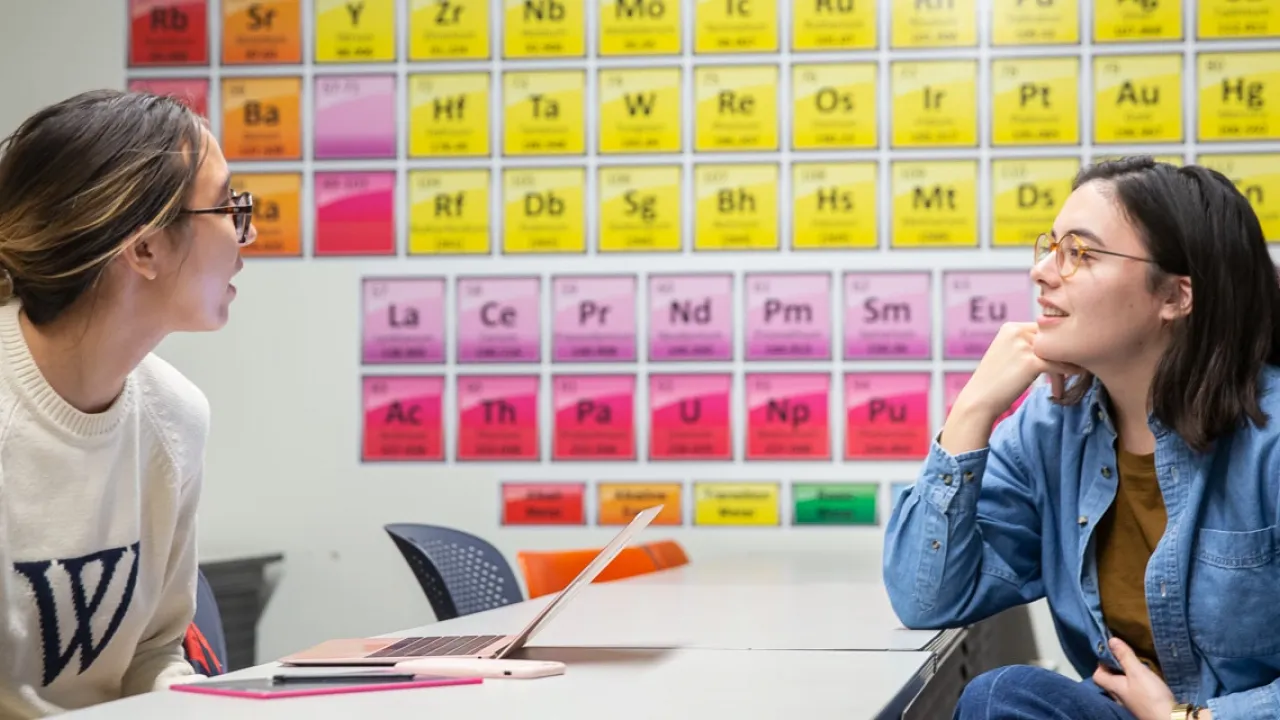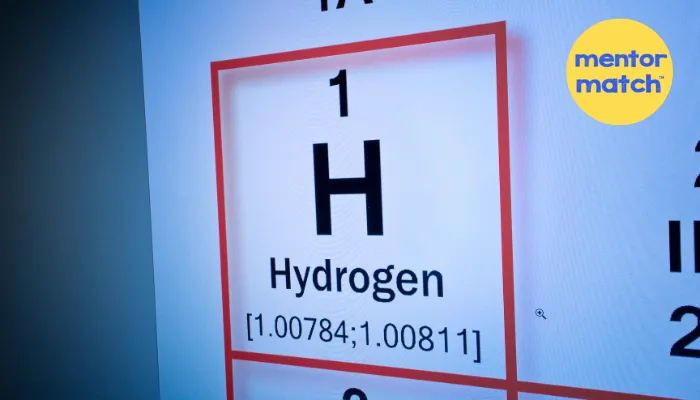
77.32% of parents see better grades in 3 months!
When students first dive into the world of chemistry, the Periodic Table can seem like a foreign language—a cryptic chart filled with letters and numbers.
Yet, it holds the key to unlocking the mysteries of the elements, the building blocks of everything around us.
As parents, it’s common to see children struggle with this seemingly complex tool.
The good news is that with the right approach and the guidance of a chemistry tutor for understanding the periodic table, it can become a fun and fascinating part of their learning journey.
In this article, we’ll break down the fundamentals of the Periodic Table, why it’s crucial to understanding chemistry, and how students can conquer it through practice.
Whether your child is preparing for an upcoming test or simply trying to grasp the subject better, this guide will offer practical tips and examples that make the Periodic Table feel like second nature.
But First, Why is the Periodic Table Essential in Chemistry?

The Periodic Table is more than just a reference chart.
It’s a map that helps students predict how elements will behave, how they react with other elements, and even how they appear in real life.
When your child looks at the Periodic Table, they’re not just memorizing symbols—they’re learning the language of chemistry.
The Periodic Table is arranged in a way that groups elements with similar properties together.
It’s organized by atomic number (the number of protons in an atom), which helps students identify patterns and relationships between different elements.
This is why a chemistry tutor for understanding the periodic table often emphasizes practice with this tool, encouraging students to look for these patterns to make sense of seemingly random symbols.
Also Read: How to Find a Top Rated Online Science Tutor
The Elements: What Are They?
Imagine the Periodic Table as a family reunion.
Each element represents a different family member, each with unique traits but some shared similarities.
For example, the "alkali metals" family (Group 1 on the table) includes elements like sodium and potassium—both are reactive metals that love to bond with other elements.
The cool part is, once your child learns to recognize these "families" of elements, the table begins to feel more like a puzzle rather than a test of memory.
A chemistry tutor for understanding the periodic table can help point out these connections in fun, memorable ways, like comparing the elements’ personalities to characters in a favorite movie or show.
Periodic Table Basics: What Do Those Numbers and Letters Mean?
At first glance, the symbols on the Periodic Table—H, O, Na—might seem like random letters.
But once your child learns the basics, it starts making sense.
For instance:
Element symbol:
The one or two letters in the center (like H for Hydrogen or O for Oxygen) are shorthand for the element’s name.
Atomic number:
The number at the top of each element’s box is the number of protons in the atom.
It also helps determine where the element sits on the table.
Atomic mass:
The number at the bottom tells us the mass of an atom (a combination of protons and neutrons).
This helps students understand how heavy or light an element is compared to others.
These facts might sound straightforward, but many students benefit from hands-on learning when it comes to fully grasping them.
By using a chemistry tutor for understanding the periodic table, children can practice exercises that cement this knowledge, helping them break the code of the table step by step.
The Periodic Table’s structure isn't just about listing elements; it’s about understanding the deeper properties that make each one unique.
One key factor that sets them apart is their electrons, which play a critical role in determining how elements interact and behave.
Cracking the Code of Electrons: How They Shape the Elements
Electrons, the tiny negative particles orbiting around an atom’s nucleus, play a huge role in determining how an element behaves.
They’re arranged in layers called electron shells, and the way they’re arranged can make elements more or less reactive.
A common way to visualize these electrons is through the Bohr Model (which looks like planets orbiting a sun) and orbital diagrams that show the paths electrons take.
Think of electrons as the “social butterflies” of atoms—whether they’re shy or outgoing depends on their arrangement.
A chemistry tutor for understanding the periodic table can show your child how to draw these diagrams, making chemistry more hands-on and exciting!
How Are the Elements Organized?
The periodic table is split into rows called periods and columns called groups.
Each period tells us how many electron shells an element has, while groups tell us how many electrons are in the outermost shell (valence electrons).
Elements in the same group have similar chemical properties because they share the same number of valence electrons.
That’s why sodium (Na) and potassium (K), both in Group 1, react similarly with water—they both have one electron in their outer shell that they’re eager to lose.
At MentorMatch, a chemistry tutor for understanding the periodic table can help your child explore these groups and periods more deeply, making sense of these trends with hands-on activities!
Metals, Non-Metals, and Metalloids: What’s the Difference?
One of the easiest ways to categorize elements is by separating them into metals, non-metals, and metalloids.
Metals, like iron and copper, are shiny and conduct electricity, while non-metals, like oxygen and nitrogen, don’t conduct electricity and can’t be easily shaped.
Metalloids, such as silicon, sit in between, having properties of both metals and nonmetals.
The periodic table is conveniently color-coded to separate these categories, making it easier for your child to see the distinctions at a glance.
Exploring the differences with a chemistry tutor for understanding the periodic table can help your child understand which elements belong in which category.
But what’s behind the positioning of these elements on the table? That brings us to quantum numbers—next!
Quantum Numbers: The Chemistry Code
Quantum numbers are like the address of an electron in an atom, telling us its energy level, the shape of its orbital, and its spin.
It may sound complex, but quantum numbers help explain why elements are placed in specific locations on the periodic table.
For example, the order in which subshells are filled depends on these numbers, and this determines an element’s chemical behavior.
A chemistry tutor for understanding the periodic table can break down these tricky concepts using diagrams and examples that simplify the connection between quantum numbers and the table.
This makes advanced topics like electron configuration more accessible and fun for your child to explore.
Let’s explore how this knowledge translates to real-world applications and the everyday importance of the Periodic Table.
Real-Life Connections: Why Do We Need the Periodic Table?
If your child ever asks,
“Why do I need to learn this?”
The answer is simple: the Periodic Table explains much of the world around us!
For example:
Cooking:
Salt (NaCl) is made of sodium and chlorine.
These elements behave differently on their own (sodium can be explosive in water, while chlorine is a toxic gas), but together, they form a safe compound that we use in our food every day.
Health: The calcium (Ca) in milk helps build strong bones, while the oxygen (O) in the air keeps us alive.
These elements are part of daily life and play important roles in our bodies.
Technology: Silicon (Si), the backbone of computer chips, is an element found in abundance in sand!
Imagine your computer being powered by something that starts on the beach.
A chemistry tutor for understanding the periodic table can provide even more relatable examples that connect chemistry to your child’s interests—whether that’s through food, sports, or gadgets. Connect with a chemistry tutor on MentorMatch today!
Now that we've explored how the Periodic Table relates to everyday life, let’s dive into some practical and enjoyable ways to help students master it.
Practice Makes Perfect: How to Make the Periodic Table Fun

Learning the Periodic Table can be fun!
With some creative activities, your child can easily engage with this important chemistry tool.
Let’s explore some enjoyable ways to make mastering the table a breeze!
- Flashcards with a Twist: Create flashcards with element symbols and fun facts (e.g., "Hydrogen makes up 75% of the universe"). A chemistry tutor for understanding the periodic table can help make study sessions interactive and engaging.
- Periodic Table Battleship: Turn the table into a game by selecting elements as "ships" and guessing your opponent’s based on their position.
- Element of the Day: Focus on one element daily and research its real-life uses (e.g., Carbon in diamonds).
- Color-Code the Table: Use colored pencils to highlight element groups, helping students visualize patterns.
- Periodic Table Song: Learn the catchy song that lists all elements, and use hand movements to reinforce memorization with a tutor's help.
By incorporating these enjoyable strategies, students can transform their learning experience and truly grasp the Periodic Table.
Also Read: How Tutoring Benefits Students And Sparks Success
Wrapping It Up
At the end of the day, the Periodic Table is like the ultimate cheat sheet for chemistry.
It tells a child everything they need to know about how elements behave, how they react, and what makes them unique.
While it may seem overwhelming at first, with practice, the table becomes a powerful tool that simplifies chemistry rather than complicates it.
The key is practice.
Regular, hands-on practice with the Periodic Table is crucial to understanding chemistry.
Working with a chemistry tutor for understanding the periodic table gives students the tools and guidance they need to make this once intimidating chart a friend.
With some creative exercises, relatable examples, and a bit of patience, your child can become a Periodic Table pro in no time.
So, next time your child says,
“Why do I need to know this?”
You can remind them that chemistry is everywhere—in the air we breathe, the food we eat, and the technology we use.
With the right approach and guidance from the tutors at MentorMatch, chemistry can be made fascinating and even fun!



.png)
.webp)
.webp)